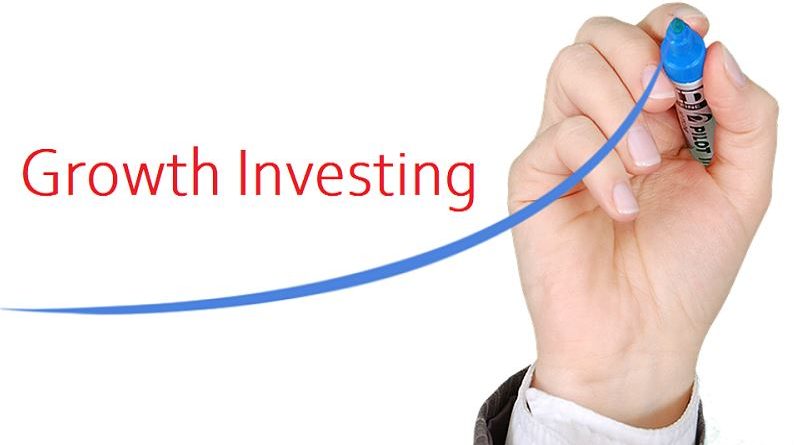growth investing and value investing which one is the best?

When it comes to investing in the stock market, two prominent approaches have emerged: growth investing and value investing. Each of these investing styles offers unique advantages and appeals to different types of investors. In this comprehensive comparison, we will explore the key characteristics, strategies, and considerations of growth investing and value investing. By understanding these approaches, investors can make informed decisions that align with their financial goals and risk tolerance.
Growth Investing
Growth investing focuses on identifying companies that have demonstrated above-average growth potential and are expected to continue delivering strong earnings growth in the future. These growth-oriented companies prioritize expansion, often reinvesting their earnings to fuel further growth. As a result, growth stocks tend to have higher valuations and may not pay significant dividends.
Characteristics of Growth Stocks
- High Valuations: Growth stocks often trade at higher price-to-earnings (P/E) ratios compared to the broader market. Investors are willing to pay a premium for these stocks due to their potential for future growth.
- Strong Earnings Growth: The hallmark of growth stocks is their ability to consistently deliver above-average earnings growth. Investors are attracted to companies that have a track record of outperforming their peers in terms of revenue and profits.
- Volatility: Growth stocks can be more volatile than other types of stocks. Their prices are sensitive to changes in the company’s growth prospects and market sentiment. As a result, growth stocks may experience significant price swings.
Strategies for Growth Investing
To successfully engage in growth investing, investors employ various strategies tailored to identify and capitalize on growth opportunities. Some common strategies include:
- Investing in Emerging Industries: Growth investors focus on industries with significant growth potential, such as technology, biotechnology, and renewable energy. These sectors often offer innovative companies at the forefront of technological advancements.
- Identifying High-Growth Companies: Growth investors seek out companies with a history of strong earnings growth and a competitive advantage in their respective industries. They analyze key financial metrics, such as revenue growth rates, profit margins, and market share, to identify promising investment opportunities.
- Long-Term Mindset: Growth investing requires a long-term perspective. Investors should be patient and willing to hold onto their investments for an extended period, allowing the companies to realize their growth potential.
Value Investing
Value investing focuses on identifying undervalued stocks that are trading below their intrinsic value. investors believe that these stocks present an opportunity to buy shares at a discount, with the expectation that their prices will eventually rise as the market recognizes their true worth. It often involves investing in companies that are out of favor or facing temporary challenges.
Characteristics of Value Stocks
Value stocks exhibit several key characteristics:
- Attractive Valuations: Value stocks trade at lower price-to-earnings (P/E) ratios and price-to-book (P/B) ratios compared to their peers. These stocks are considered undervalued, offering investors the potential for capital appreciation.
- Steady Business Models: Value stocks are associated with companies that have established business models and generate consistent revenue and earnings. These companies may not experience rapid growth but are considered stable and reliable.
- Potential for Dividend Income: Many value stocks pay dividends to their shareholders. These companies often have a history of distributing a portion of their earnings as dividends, providing investors with regular income.
Strategies for Value Investing
Value investors employ various strategies to identify undervalued stocks and take advantage of their potential for appreciation. Here are some common strategies used in value investing:
- Fundamental Analysis: Value investors analyze financial statements, cash flow statements, and balance sheets to determine the intrinsic value of a company. By comparing a company’s market price to its underlying fundamentals, value investors identify potential investment opportunities.
- Contrarian Investing: Value investors often go against the market consensus and invest in stocks that are out of favor or experiencing temporary setbacks. By recognizing the long-term potential of these companies, value investors aim to profit when the market sentiment changes.
- Margin of Safety: Value investors seek a margin of safety when investing in undervalued stocks. They aim to buy stocks at a significant discount to their intrinsic value, allowing for potential upside while minimizing downside risk.
Growth vs Value: Pros and Cons
Both growth investing and value investing have their advantages and drawbacks. Understanding these pros and cons can help investors make informed decisions based on their financial goals and risk tolerance.
Growth Investing: Pros and Cons
Pros:
- High Growth Potential: Growth stocks offer the potential for significant capital appreciation, especially in emerging industries and innovative sectors.
- Opportunity for Long-Term Growth: By investing in companies with a track record of strong earnings growth, investors can benefit from their continued success over the long term.
- Diversification: Including growth stocks in a portfolio can provide diversification, as they tend to perform differently from value stocks during various market conditions.
Cons:
- Volatility and Risk: Growth stocks are often more volatile than other types of stocks, making them riskier investments. They can experience substantial price swings and may be more susceptible to market downturns.
- Lack of Dividend Income: Growth stocks typically reinvest their earnings into expanding their businesses, which means they often do not pay significant dividends. This can be a disadvantage for investors seeking regular income.
- Higher Valuations: Growth stocks tend to have higher valuations, which can limit their upside potential and increase the risk of a market correction.
Value Investing: Pros and Cons
Pros:
- Potential for Capital Appreciation: Value stocks offer the potential for capital appreciation as the market recognizes their true value and their stock prices rise.
- Dividend Income: Many value stocks pay dividends, providing investors with regular income. This can be advantageous for investors seeking a steady stream of cash flow.
- Lower Valuations: Value stocks are often priced below their intrinsic value, allowing investors to buy shares at a discount. This provides a margin of safety and potential for higher returns.
Cons:
- Limited Growth Potential: Value stocks may not experience rapid growth compared to growth stocks. Their focus is on stability and reliable performance rather than rapid expansion.
- Market Timing Challenges: Identifying undervalued stocks and determining the right time to invest can be challenging. Value investing requires thorough analysis and a deep understanding of the company’s fundamentals.
- Potential for Value Traps: Some stocks may appear undervalued but have fundamental issues that prevent them from realizing their true value. Value investors need to carefully assess the company’s long-term prospects to avoid value traps.
growth investing and value investing : Overlapping Strategies
While growth investing and value investing are often seen as distinct strategies, there are instances where these approaches overlap. Certain stocks may exhibit characteristics of both growth and value, presenting an opportunity for investors to benefit from the strengths of both styles.
Evolving Companies: Growth to Value
Companies often evolve over time, transitioning from growth stocks to value stocks or vice versa. A company that was once a high-growth stock may mature and become a more stable, income-generating value stock. Similarly, a value stock can experience a turnaround and become a growth stock as the market recognizes its potential.
Value-Growth Blended Funds
Investment managers have created blended funds that incorporate elements of both growth and value investing. These funds seek to strike a balance between the two styles, offering investors the benefits of both strategies. Blended funds often employ a “growth at a reasonable price” (GARP) strategy, focusing on companies with growth potential but also considering traditional value indicators.
Conclusion
In the world of investing, growth investing and value investing represent two distinct approaches with unique characteristics and strategies. While growth investing focuses on high-growth companies with the potential for significant capital appreciation, value investing seeks undervalued stocks with the potential for future appreciation. Both styles have their pros and cons, and investors should consider their financial goals and risk tolerance when choosing between them. Additionally, recognizing the overlapping strategies and considering blended funds can provide diversification and exposure to both growth and value opportunities. By understanding the nuances of growth and value investing, investors can make informed decisions to build a well-rounded investment portfolio.



